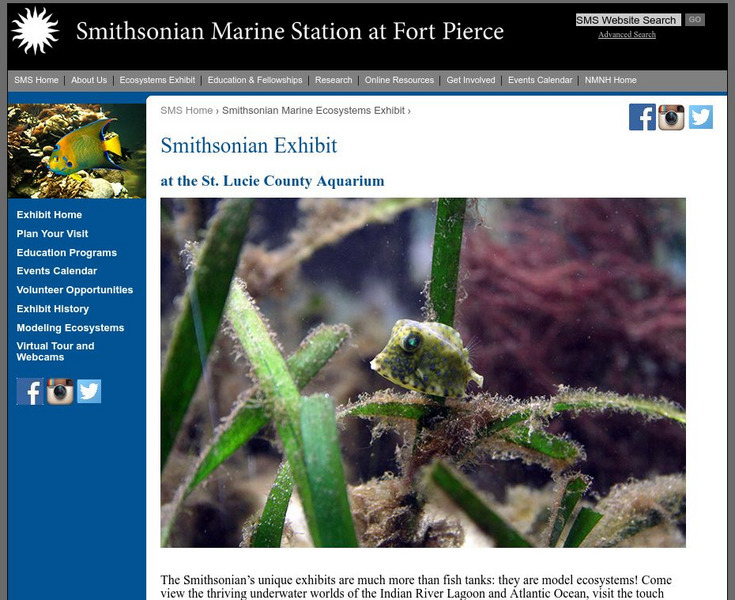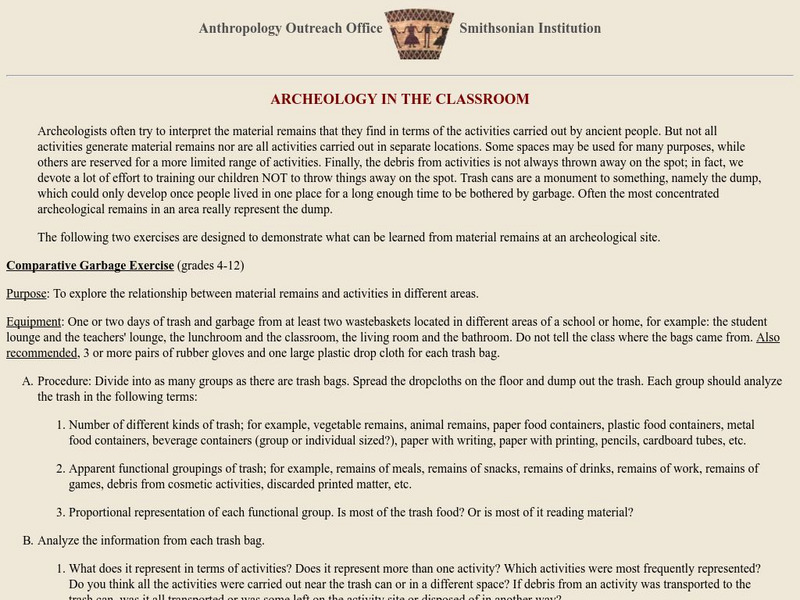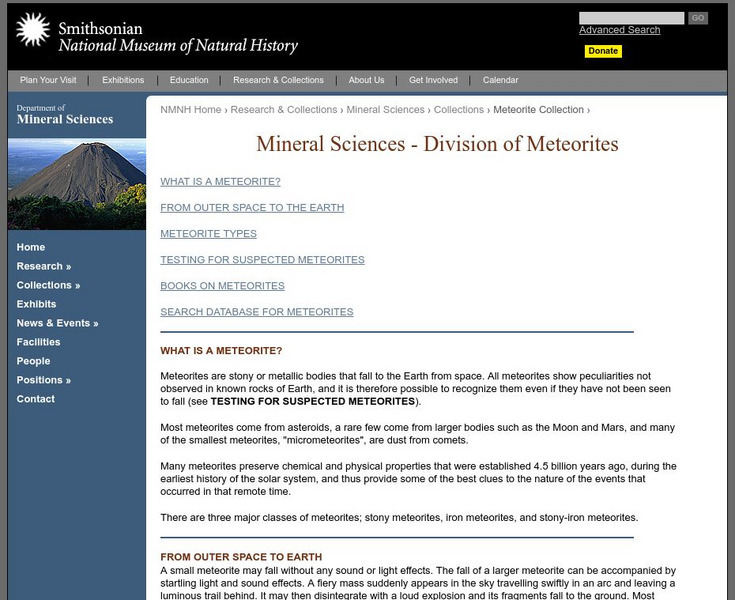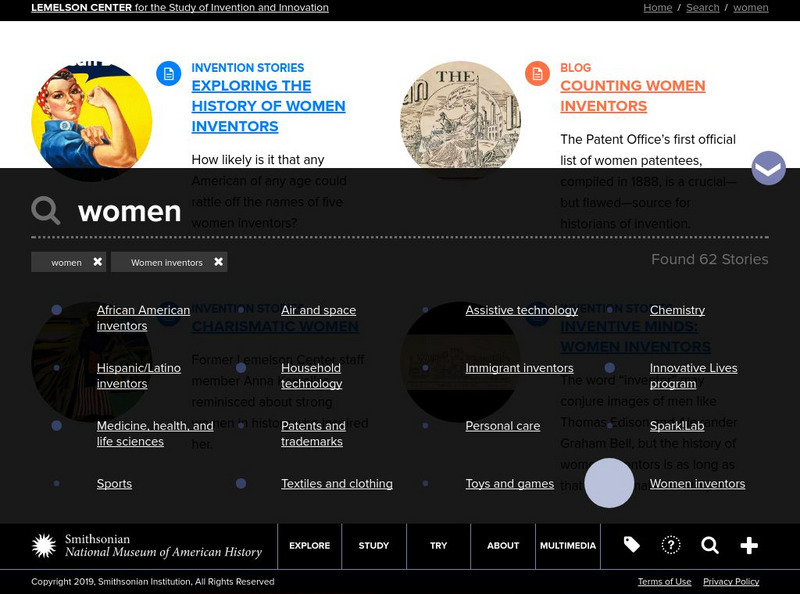Smithsonian Institution
Smithsonian Libraries:chasing Venus: Observing the Transits of Venus 1631 2004
An online website, from a historical perspective, of the study of the transit of Venus between the sun and the earth.
Smithsonian Institution
Smithsonian Libraries: Zoos, a Historical Perspective
An online sample of maps, drawings and photographs of zoos from over 30 states and 40 countries.
Smithsonian Institution
Smithsonian Libraries: Innovators Gallery
Who invented the tennis racket, Crayola Crayons or Tupperware? Smithsonian site invites users to explore the achievements of a variety of American innovators and inventors.
Smithsonian Institution
Smithsonian Libraries: Le Garde Meuble
Find illistrustrations of French furniture types and styles from a noteworthy French periodical, Le Garde-meuble.
Smithsonian Institution
Smithsonian Libraries: Sewing Machines
The Smithsonian Institute provides a comprehensive background of the sewing machine. Includes pictures, a timeline, literature and additional resources.
Smithsonian Institution
Smithsonian Libraries:taking to the Skies: Wright Brothers, Birth of Aviation
An article regarding the Wright brother's history of flight. Includes pictures and further reading material.
Smithsonian Institution
National Postal Museum: Music: Latin Jazz Issue
Learn about key aspects of Latin jazz from this captioned exhibit of a stamp issued in 2008 to celebrate it.
Smithsonian Institution
National Museum of African Art: Diversity of African Art
Features an article and clickable, illustrated links to show the deep, rich site of African art from many places and times, and taking many forms.
Smithsonian Institution
National Museum of Natural History: Department of Mineral Sciences Collections
Search the database of the Smithsonian's National Museum of Natural History for gems & minerals, meteorites with images, or petrology & volcanology.
Smithsonian Institution
Smithsonian Marine Ecosystems Exhibit
Take an online tour of the Smithsonian's "Exploring Marine Ecosystems" exhibit. Learn about coral reefs and look behind the scenes as scientists maintain the model ecosystems.
Smithsonian Institution
National Museum of African Art:the Diversity of African Art
Students who visit this resource can conduct an image search through both traditional and contemporary African art. The search can even be specified to an African country or a specific ethnic group.
Smithsonian Institution
National Museum of Natural History: Northwest Coast American Indian Bibliography
The National Museum of Natural History of the Smithsonian presents an extensive annotated bibliography of works on Native Americans for grades K-12.
Smithsonian Institution
National Museum of Natural History: Random Strategies in Archeology
Students participate in a three-part archeological interpretation activity. First, they learn the principles of archaeology and the importance of material culture, and then they question ideas and interpret artifact evidence. Finally,...
Smithsonian Institution
National Museum of Natural History: Archeology in the Classroom
Two different leveled lessons allow students to become archeologists as they interpret material remains left behind by ancient people.
Smithsonian Institution
National Museum of Natural History: Mineral Science: Division of Meteorites
A review of meteorites, what they are, what types there are, and a collection of reading resources to understand more about these objects falling from the sky.
Smithsonian Institution
National Museum of Natural History: Canela Body Adornment
Among the Canela of Brazil, adorning the body enhances appearance, signals changes in social identity, and expresses culturally prescribed values. View vivid photos of the different cosmetic treatments men and women undergo.
Smithsonian Institution
National Air and Space Museum: Apollo 13
This site contains facts and images pertaining to the crew, spacecraft, and mission of Apollo 13.
Smithsonian Institution
Smithsonian: Science: Week of 4 22 13: Do Teachers Need Their Own "Bar Exam"?
This article presents the debate over establishing an offical licensing exam for teachers, similar to the Bar Exam.
Smithsonian Institution
Tween Tribune: Teenage Girls Have Led Language Innovation
Article reports on the influence teenage girls have had on language over the centuries.
Smithsonian Institution
National Air and Space Museum: Exploring the Planets: Ancient Times & the Greeks
In ancient times only five planets were known: Mercury, Venus, Mars, Jupiter, and Saturn. Learn about Greek astronomer Ptolemy's theory for the solar system that was to survive for fourteen centuries.
Smithsonian Institution
National Museum of American History: Abraham Lincoln: An Extraordinary Life
Smithsonian exhibition on the life and times of Abraham Lincoln. Text supplemented with primary source documents, video and photographs.
Smithsonian Institution
National Air and Space Museum: Exploring the Planets: Earth's Lithosphere
The plate tectonics and other features of the Earth's lithosphere are explained and illustrated. Has links to definitions of the magnetosphere, atmosphere, and hydrosphere.
Smithsonian Institution
Lemelson Center: Women Inventors
Discover the contributions of several women inventors. Did you know a woman invented the Kevlar Vest? Teacher resources available for download.

















